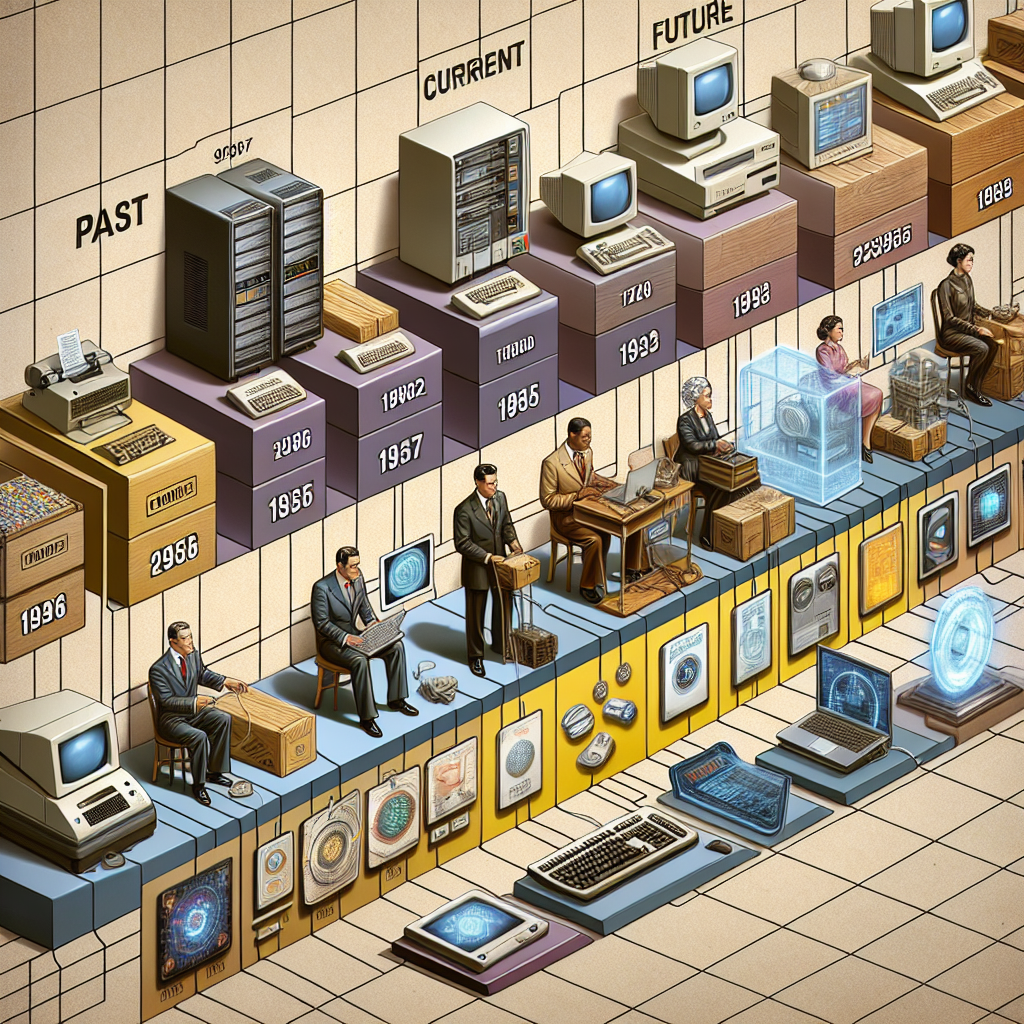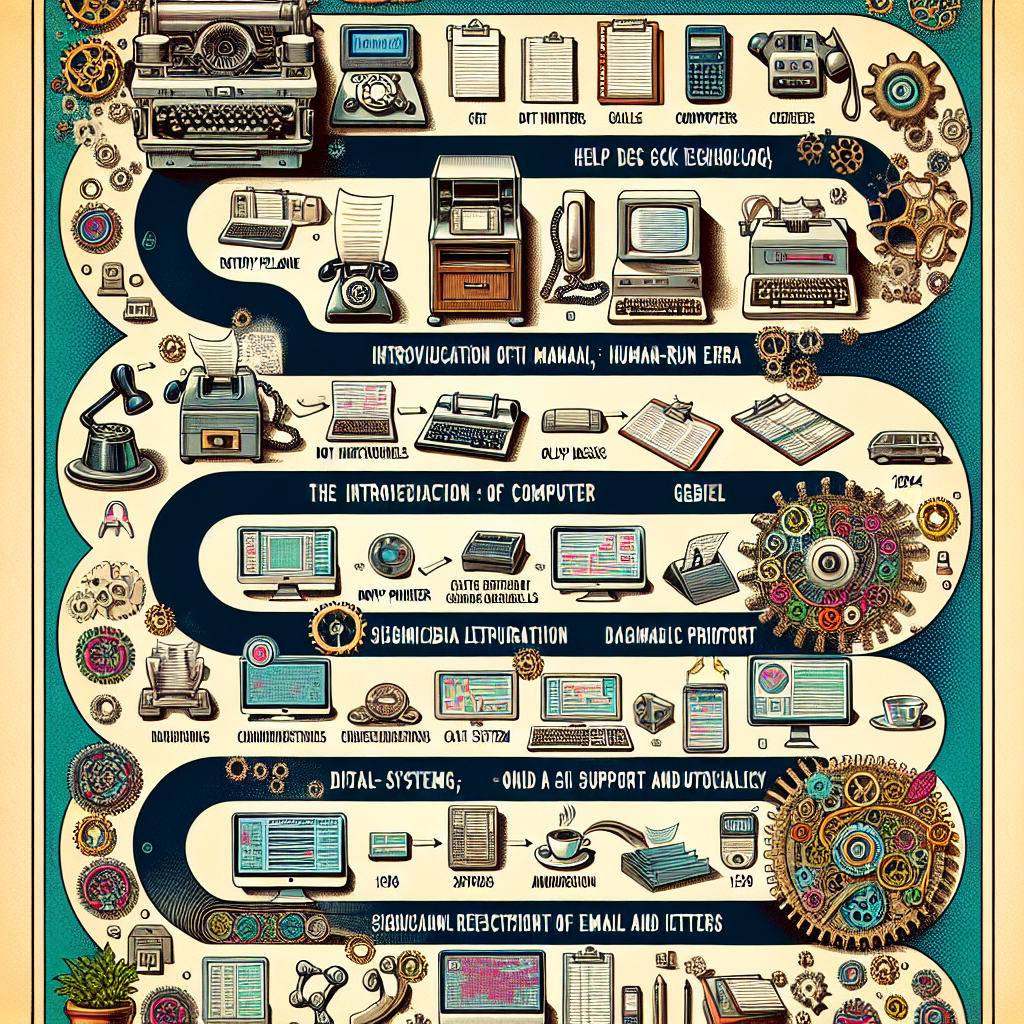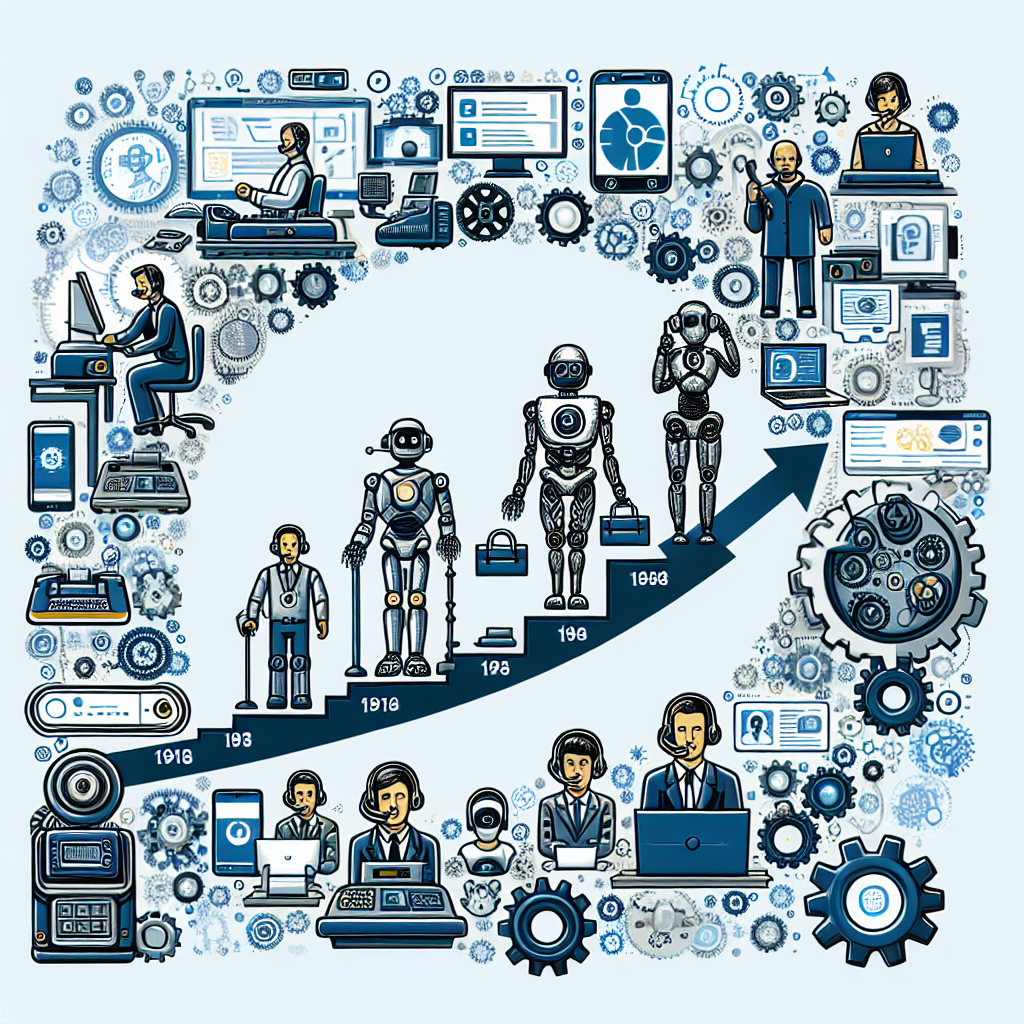Your cart is currently empty!
Tag: Technology

The Role of Cloud Technology in Disaster Recovery
In today’s fast-paced and technology-driven world, businesses rely heavily on their IT infrastructure to operate efficiently and effectively. This dependency on technology has made disaster recovery planning a critical aspect of business continuity. In the event of a natural disaster, cyber attack, or any other unforeseen event that disrupts operations, businesses need to have a solid disaster recovery plan in place to ensure minimal downtime and data loss.Cloud technology has revolutionized the way businesses approach disaster recovery. With the ability to store data and applications in the cloud, businesses can now easily recover and access their critical information from anywhere at any time. This flexibility and accessibility have made cloud technology an invaluable tool in disaster recovery planning.
One of the key advantages of using cloud technology for disaster recovery is its cost-effectiveness. Traditional disaster recovery solutions often require businesses to invest in expensive hardware and infrastructure to replicate their data and applications. With cloud technology, businesses can leverage the infrastructure of cloud service providers, eliminating the need for costly investments in hardware and maintenance.
Another benefit of cloud technology in disaster recovery is its scalability. Businesses can easily scale up or down their storage and computing resources based on their needs, allowing for a more flexible and efficient disaster recovery plan. This scalability ensures that businesses can quickly recover and access their critical data and applications without any delays or disruptions.
Furthermore, cloud technology offers enhanced security features that help protect businesses’ data and applications from cyber attacks and data breaches. Cloud service providers invest heavily in security measures to ensure that their customers’ data is secure and protected at all times. This added layer of security gives businesses peace of mind knowing that their critical information is safe and secure in the cloud.
In conclusion, cloud technology plays a crucial role in disaster recovery planning for businesses. Its cost-effectiveness, scalability, and enhanced security features make it an ideal solution for businesses looking to ensure business continuity in the event of a disaster. By leveraging cloud technology for disaster recovery, businesses can minimize downtime, reduce data loss, and protect their critical information, ultimately safeguarding their operations and reputation.

Unlocking the Power of IT Solutions: How Technology is Revolutionizing Business Operations
In today’s fast-paced and ever-evolving business world, technology plays a crucial role in driving efficiency, productivity, and innovation. IT solutions are at the forefront of this digital transformation, revolutionizing how organizations operate and compete in the market.From cloud computing to artificial intelligence, IT solutions have enabled businesses to streamline processes, enhance communication, and make data-driven decisions. By leveraging technology, companies can automate repetitive tasks, improve customer experiences, and gain a competitive edge in the industry.
One of the key benefits of IT solutions is their ability to unlock the power of data. With the help of advanced analytics tools, organizations can gather, analyze, and interpret vast amounts of data to gain valuable insights into their operations, customers, and market trends. This data-driven approach allows businesses to make informed decisions, identify new opportunities, and optimize their strategies for success.
Moreover, IT solutions have also revolutionized communication and collaboration within organizations. With the rise of remote work and virtual teams, tools like video conferencing, instant messaging, and project management software have become essential for keeping employees connected and productive. These technologies enable teams to work together seamlessly, regardless of their physical location, fostering a more agile and responsive organizational culture.
Additionally, IT solutions have significantly improved customer experiences, allowing businesses to deliver personalized and efficient services to their clients. From e-commerce platforms to customer relationship management systems, technology has enabled companies to better understand and respond to customer needs, preferences, and feedback. By leveraging data analytics and automation, businesses can create targeted marketing campaigns, provide real-time support, and enhance overall customer satisfaction.
In conclusion, IT solutions are transforming the way businesses operate and compete in the digital age. By embracing technology and leveraging the power of data, organizations can drive efficiency, productivity, and innovation across all aspects of their operations. As technology continues to evolve, businesses that embrace IT solutions will be well-positioned to thrive and succeed in an increasingly competitive and dynamic marketplace.

Disaster Recovery in the Cloud: Leveraging Technology for Business Continuity
In today’s fast-paced business landscape, it is crucial for organizations to have a robust disaster recovery plan in place to ensure business continuity in the event of a disaster. With the increasing reliance on technology in day-to-day operations, leveraging cloud technology for disaster recovery has become a popular choice for many businesses.Disaster recovery in the cloud involves storing critical data and applications in a secure, off-site location that can be accessed in the event of a disaster. This allows businesses to quickly recover and resume operations with minimal downtime, minimizing the impact on productivity and revenue.
One of the key advantages of leveraging cloud technology for disaster recovery is the flexibility and scalability it offers. Cloud-based solutions can easily be scaled up or down based on the needs of the business, allowing organizations to tailor their disaster recovery plans to meet their specific requirements. This flexibility also enables businesses to quickly adapt to changing circumstances and ensure that their critical data and applications are always protected and accessible.
Cloud-based disaster recovery solutions also offer improved reliability and security compared to traditional on-premise solutions. Cloud providers typically have multiple data centers located in different geographical locations, ensuring that data is replicated and stored in multiple locations for added redundancy. This redundancy reduces the risk of data loss and ensures that critical data and applications are always available when needed.
Furthermore, cloud providers invest heavily in cybersecurity measures to protect data from threats such as hacking, malware, and ransomware. This level of security is often beyond the capabilities of many small to medium-sized businesses, making cloud-based disaster recovery an attractive option for organizations looking to enhance their data protection measures.
Another benefit of leveraging cloud technology for disaster recovery is cost-effectiveness. Traditional disaster recovery solutions often require significant upfront investment in hardware, software, and infrastructure, as well as ongoing maintenance and management costs. Cloud-based solutions, on the other hand, operate on a pay-as-you-go model, allowing businesses to only pay for the resources they use. This can result in significant cost savings for organizations, particularly smaller businesses with limited IT budgets.
In conclusion, disaster recovery in the cloud offers businesses a cost-effective, scalable, and secure solution for ensuring business continuity in the event of a disaster. By leveraging cloud technology, organizations can protect their critical data and applications, minimize downtime, and ensure that they can quickly recover and resume operations, no matter what challenges they may face. With the increasing importance of technology in today’s business environment, investing in cloud-based disaster recovery is a smart choice for organizations looking to safeguard their data and maintain business continuity in an increasingly uncertain world.

The Role of Technology in Enhancing Business Continuity and Disaster Recovery Plans
In today’s fast-paced and highly interconnected world, businesses are increasingly reliant on technology to operate efficiently and effectively. However, with this reliance comes the risk of technology failures, cyber attacks, and natural disasters that can disrupt operations and put the business at risk. In order to mitigate these risks and ensure business continuity, companies need to have robust disaster recovery plans in place that leverage technology to enhance their resilience.One of the key roles of technology in enhancing business continuity and disaster recovery plans is its ability to automate and streamline processes. Automation tools can be used to back up data, monitor systems for potential issues, and quickly respond to and recover from disruptions. This not only reduces the likelihood of human error but also speeds up the recovery process, minimizing downtime and ensuring that critical business functions can continue without interruption.
Cloud computing is another technology that plays a crucial role in enhancing business continuity and disaster recovery plans. By storing data and applications in the cloud, businesses can access them from anywhere, at any time, even if their physical infrastructure is compromised. This flexibility and redundancy can be a lifesaver in the event of a disaster, allowing employees to continue working remotely and keeping the business running smoothly.
In addition to automation and cloud computing, technology also enables businesses to test and refine their disaster recovery plans more effectively. Through simulations and drills, companies can identify weaknesses in their plans and make necessary adjustments to improve their readiness for potential disruptions. This proactive approach can help businesses minimize the impact of disasters and recover more quickly when they occur.
Furthermore, technology can also be used to enhance communication and collaboration during a crisis. With tools like instant messaging, video conferencing, and collaboration platforms, employees can stay connected and work together seamlessly, even when they are geographically dispersed. This can help facilitate a coordinated response to a disaster and ensure that critical information is shared quickly and effectively.
In conclusion, technology plays a vital role in enhancing business continuity and disaster recovery plans by automating processes, leveraging cloud computing, facilitating testing and refinement, and enabling communication and collaboration. By leveraging these technologies effectively, businesses can improve their resilience in the face of disruptions and ensure that they can continue to operate successfully, even in the face of unexpected challenges.

The Evolution of IT Consulting: How Technology is Changing the Industry
The field of IT consulting has evolved significantly over the years, thanks to advancements in technology that have fundamentally changed the way businesses operate. From the early days of basic computer programming to today’s sophisticated cloud computing and artificial intelligence solutions, IT consulting has become an essential service for companies looking to stay ahead in the digital age.In the past, IT consulting primarily involved helping businesses set up and maintain their computer systems, troubleshoot technical issues, and develop custom software solutions. However, as technology has become more complex and interconnected, the role of IT consultants has expanded to encompass a wide range of services, from cybersecurity and data analytics to digital transformation and cloud migration.
One of the biggest drivers of change in the IT consulting industry has been the rise of cloud computing. Cloud technology allows businesses to access computing resources and storage space over the internet, rather than relying on physical servers or hardware. This has revolutionized the way companies store, manage, and process data, making it easier and more cost-effective to scale their operations.
Another major trend shaping the IT consulting industry is the increasing focus on cybersecurity. With the rise of cyber threats such as ransomware, phishing attacks, and data breaches, businesses are investing more in measures to protect their sensitive information. IT consultants play a vital role in helping companies develop comprehensive cybersecurity strategies, implement the latest security tools and technologies, and respond quickly to any security incidents.
Artificial intelligence (AI) and machine learning are also transforming the IT consulting industry. These technologies enable businesses to automate repetitive tasks, analyze vast amounts of data, and make more informed decisions. IT consultants are helping companies leverage AI and machine learning to improve efficiency, reduce costs, and gain a competitive edge in their respective industries.
Overall, the evolution of IT consulting has been driven by the rapid pace of technological innovation and the increasing complexity of business operations. As companies continue to adopt new technologies and digital solutions, the demand for skilled IT consultants will only grow. By staying ahead of the curve and embracing the latest trends in technology, IT consulting firms can position themselves as trusted partners in helping businesses navigate the ever-changing digital landscape.

The Role of Technology in Disaster Recovery: Tools and Solutions
In today’s fast-paced world, technology plays a crucial role in disaster recovery efforts. From natural disasters like hurricanes and earthquakes to man-made disasters such as cyberattacks and data breaches, organizations need to be prepared for any eventuality. Technology can provide the tools and solutions needed to ensure a swift and effective recovery in the aftermath of a disaster.One of the key aspects of disaster recovery is data backup and recovery. In the event of a disaster, organizations need to have a backup of their data to ensure that business operations can resume quickly. Cloud storage solutions have become increasingly popular for data backup, as they provide a secure and scalable way to store data offsite. By utilizing cloud storage, organizations can easily restore their data in the event of a disaster, minimizing downtime and ensuring business continuity.
Another important aspect of disaster recovery is communication. During a disaster, communication is key to coordinating response efforts and keeping stakeholders informed. Technology can provide various communication tools, such as messaging apps, video conferencing platforms, and emergency notification systems, to ensure that everyone is on the same page and can quickly respond to the situation at hand.
In addition to data backup and communication tools, technology can also provide solutions for monitoring and assessing the impact of a disaster. For example, remote sensors and monitoring systems can be deployed to track the status of critical infrastructure and assets in real-time. This data can help organizations make informed decisions about resource allocation and response efforts, ultimately speeding up the recovery process.
Furthermore, technology can also play a crucial role in disaster preparedness. By utilizing predictive analytics and risk assessment tools, organizations can identify potential risks and vulnerabilities before a disaster strikes. This information can help organizations develop proactive strategies to mitigate the impact of a disaster and ensure that they are well-prepared to respond effectively.
Overall, technology plays a vital role in disaster recovery efforts by providing the tools and solutions needed to ensure a swift and effective response to any disaster. By leveraging technology, organizations can minimize downtime, protect critical data and assets, and ultimately bounce back stronger in the aftermath of a disaster. As the frequency and severity of disasters continue to increase, it is essential for organizations to embrace technology as a key component of their disaster recovery strategy.

Improving Customer Service through Remote Monitoring Technology
In today’s fast-paced world, customer service is more important than ever. With the rise of technology, customers expect quick and efficient service at all times. This is where remote monitoring technology comes in. By utilizing remote monitoring technology, businesses can improve their customer service by providing real-time support and resolving issues before they escalate.One of the key benefits of remote monitoring technology is its ability to track and monitor customers’ interactions with a company’s products or services. This allows businesses to identify any potential issues or problems that customers may be experiencing and address them proactively. By monitoring customer interactions in real-time, businesses can provide immediate assistance and support, leading to higher customer satisfaction.
Remote monitoring technology also allows businesses to collect valuable data on customer behavior and preferences. By analyzing this data, businesses can gain insights into their customers’ needs and preferences, allowing them to tailor their products and services to better meet customer demands. This can lead to increased customer loyalty and retention, as well as higher customer satisfaction rates.
Furthermore, remote monitoring technology can help businesses identify and address potential problems with their products or services before they impact customers. By monitoring key performance indicators and system health in real-time, businesses can proactively address issues and prevent downtime or disruptions. This not only improves customer satisfaction but also helps businesses save time and resources by avoiding costly repairs or replacements.
In conclusion, remote monitoring technology is a valuable tool for improving customer service. By providing real-time support, collecting valuable customer data, and proactively addressing issues, businesses can enhance their customers’ experience and build stronger relationships. Investing in remote monitoring technology is a smart move for businesses looking to stay ahead in today’s competitive market and deliver exceptional customer service.

The Role of Data and Technology in Proactive Maintenance
Proactive maintenance is a crucial aspect of ensuring the smooth operation of machinery and equipment in various industries. It involves taking preventive measures to identify and address potential issues before they escalate into costly breakdowns. In recent years, the role of data and technology in proactive maintenance has become increasingly important, as they provide valuable insights and enable more efficient and effective maintenance strategies.Data plays a key role in proactive maintenance by providing valuable information about the performance and condition of equipment. This data can be collected through various sources, such as sensors, monitoring systems, and maintenance logs. By analyzing this data, maintenance teams can identify patterns and trends that may indicate potential issues or maintenance needs. For example, abnormal vibrations or temperature readings can signal impending equipment failure, prompting maintenance teams to take preventive action.
Technology also plays a crucial role in proactive maintenance by enabling real-time monitoring and analysis of equipment performance. Advanced technologies, such as Internet of Things (IoT) devices and artificial intelligence (AI) algorithms, can collect and analyze large amounts of data in real-time, providing maintenance teams with actionable insights. For example, IoT sensors can continuously monitor equipment conditions and send alerts when abnormalities are detected, allowing maintenance teams to address issues promptly.
Furthermore, technology can also streamline the maintenance process by automating tasks and optimizing maintenance schedules. Predictive maintenance software, for example, can use historical data and machine learning algorithms to predict when equipment is likely to fail, enabling maintenance teams to schedule maintenance activities at the most convenient times. This can help reduce downtime, increase equipment reliability, and ultimately save time and money for businesses.
In conclusion, data and technology play a crucial role in proactive maintenance by providing valuable insights and enabling more efficient and effective maintenance strategies. By harnessing the power of data and technology, maintenance teams can proactively identify and address potential issues before they escalate into costly breakdowns, ultimately improving equipment reliability and performance. As technology continues to advance, the role of data and technology in proactive maintenance will only become more important in ensuring the smooth operation of machinery and equipment in various industries.

The Evolution of Help Desk Technology: What You Need to Know
The Evolution of Help Desk Technology: What You Need to KnowThe concept of the help desk has been around for decades, but the way in which it operates has evolved significantly over the years. From simple phone lines to advanced artificial intelligence, the technology behind help desks has come a long way. In this article, we will explore the evolution of help desk technology and what you need to know about the latest advancements.
A Brief History of Help Desk Technology
The first help desks were established in the 1980s as a way for companies to provide technical support to their customers. These early help desks were primarily staffed by human operators who would answer phone calls and assist customers with their technical issues. As technology advanced, help desks began to incorporate email support and online chat services to better serve customers.
In the 2000s, the rise of self-service portals and knowledge bases revolutionized the help desk industry. Customers were now able to find answers to their questions without having to wait for a support agent to assist them. This shift towards self-service not only improved customer satisfaction but also reduced the workload for help desk agents.
The Latest Advancements in Help Desk Technology
Today, the help desk industry is on the cusp of another technological revolution with the integration of artificial intelligence (AI) and machine learning. AI-powered chatbots are now able to handle a wide range of customer inquiries, from simple password resets to complex technical issues. These chatbots can provide instant responses to customers, improving response times and overall customer satisfaction.
In addition to AI-powered chatbots, help desk software now includes advanced analytics tools that allow companies to track and analyze customer interactions. These analytics can help companies identify trends and patterns in customer inquiries, leading to more efficient problem-solving and improved customer service.
Another key advancement in help desk technology is the integration of omni-channel support. Customers now expect to be able to reach out for support through a variety of channels, including phone, email, chat, and social media. Help desk software that offers omni-channel support can streamline communication and ensure that customers receive consistent and timely assistance, regardless of the channel they choose.
What You Need to Know
As technology continues to evolve, companies must stay ahead of the curve to provide the best possible customer support. Investing in advanced help desk technology can help companies improve efficiency, reduce costs, and increase customer satisfaction.
When choosing a help desk solution, look for features such as AI-powered chatbots, omni-channel support, and advanced analytics. These tools can help streamline your help desk operations and provide a better overall experience for your customers.
In conclusion, the evolution of help desk technology has come a long way since its inception. By staying informed about the latest advancements in help desk technology, companies can ensure that they are providing the best possible support to their customers. Investing in advanced help desk solutions can help companies improve efficiency, reduce costs, and ultimately enhance the customer experience.

The Impact of Technology on the Evolution of Technical Support
Technology has revolutionized the way technical support is delivered, transforming the entire support process and enhancing the customer experience. As technology continues to evolve, technical support teams have had to adapt and innovate to keep up with the changing landscape. In this article, we will explore the impact of technology on the evolution of technical support and how it has shaped the industry.One of the most significant impacts of technology on technical support is the shift towards self-service options. With the rise of chatbots, knowledge bases, and online forums, customers are now able to troubleshoot and resolve issues on their own without having to rely on a support agent. This has not only improved customer satisfaction by providing faster solutions, but it has also reduced the workload on support teams, allowing them to focus on more complex issues.
Additionally, advancements in artificial intelligence and machine learning have enabled support teams to provide more personalized and efficient service. AI-powered tools can analyze customer data, predict issues before they occur, and provide proactive support, ultimately improving the overall customer experience. These technologies have also enabled support teams to automate repetitive tasks, freeing up time for agents to focus on more strategic initiatives.
Furthermore, the evolution of communication channels has had a significant impact on technical support. With the rise of social media, live chat, and video conferencing, customers now have more ways to reach out for help and receive real-time support. This has not only improved response times but has also allowed support teams to connect with customers on a more personal level, building stronger relationships and loyalty.
Overall, the impact of technology on the evolution of technical support has been profound. From self-service options to AI-powered tools and advanced communication channels, technology has transformed the support process, making it more efficient, personalized, and accessible. As technology continues to advance, it will be interesting to see how technical support teams further innovate and adapt to meet the changing needs of customers in the digital age.
